
Paul Kenneth Bernardo, also known as Paul Jason Teale, is a Canadian serial rapist and serial killer dubbed the Scarborough Rapist, the Schoolgirl Killer and, together with his former wife Karla Homolka, one of the Ken and Barbie Killers. He is known for initially committing a series of rapes in Scarborough, Ontario, a suburb of Toronto, between 1987 and 1990, before committing three murders with Homolka; among these victims was Karla's younger sister, Tammy Homolka.
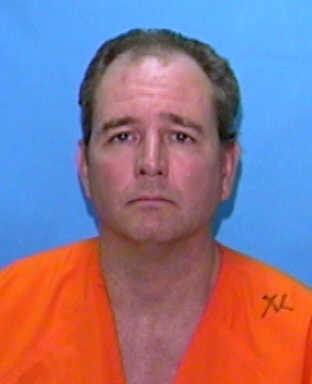
Daniel "Danny" Harold Rolling, known as the Gainesville Ripper, was an American serial killer who murdered five college students in Gainesville, Florida over four days in August 1990.
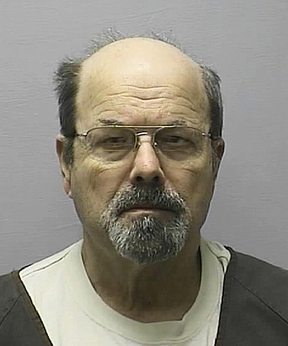
Dennis Lynn Rader, also known as BTK, is an American serial killer who murdered at least ten people in Wichita and Park City, Kansas, between 1974 and 1991. Although Rader occasionally killed or attempted to kill men and children, he typically targeted women. His victims were often bound, sometimes with objects from their homes, and either suffocated with a plastic bag or manually strangled with a ligature.

The Philadelphia Police Department is the police agency responsible for law enforcement and investigations within the County and City of Philadelphia, Pennsylvania. The PPD is one of the oldest municipal police agencies, fourth-largest police force and sixth-largest non-federal law enforcement agency in the United States. Since records were first kept in 1828, at least 289 PPD officers have died in the line of duty.

The Claremont serial killings is the name given by the media to a case involving the disappearance of an Australian woman, aged 18, and the killings of two others, aged 23 and 27, in 1996–1997. After attending night spots in Claremont, a wealthy western suburb of Perth, Western Australia, all three women disappeared in similar circumstances leading police to suspect that an unidentified serial killer was the offender. The case was described as the state's biggest, longest running, and most expensive investigation.
Levi Bellfield is an English serial killer, sex offender, rapist, kidnapper, and burglar. He was found guilty on 25 February 2008 of the murders of Marsha McDonnell and Amélie Delagrange and the attempted murder of Kate Sheedy, and sentenced to life imprisonment. On 23 June 2011, Bellfield was further found guilty of the murder of Milly Dowler. On both occasions, the judge imposed a whole life order, meaning that Bellfield will serve the sentence without the possibility of parole. Bellfield was the first prisoner in history to have received two whole life orders.

Paul J. Morrison is an American lawyer and former Attorney General of Kansas. Morrison attended Washburn University and Washburn School of Law, graduating in 1980. While at Washburn, he was a member of the Kansas Beta chapter of Phi Delta Theta.

Ann Marie Harrison was a 15-year-old American girl who was kidnapped, raped, and murdered by two men in Raytown, Missouri. On March 22, 1989, Harrison was abducted from outside her home as she waited for the school bus. She was taken to a house where she was raped by her abductors before being stabbed to death in the trunk of a car. Her two killers: Michael Anthony Taylor and Roderick Nunley were executed for the crime by the state of Missouri via lethal injection, in 2014 and 2015, respectively.

Robert William Pickton, also known as the Pig Farmer Killer or the Butcher, was a Canadian serial killer and pig farmer. After dropping out of school, he left a butcher's apprenticeship to begin working full-time at his family's pig farm, and inherited it in the early 1990s.
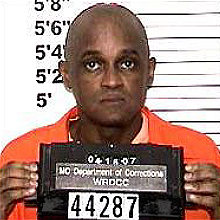
Lorenzo Jerome Gilyard Jr., known as The Kansas City Strangler, is an American serial killer. A former trash-company supervisor, Gilyard is believed to have raped and murdered at least 13 women and girls from 1977 to 1993. He was convicted of six counts of murder on March 16, 2007.
It is possible to convict someone of murder without the purported victim's body in evidence. However, cases of this type have historically been hard to prove, often forcing the prosecution to rely on circumstantial evidence, and in England there was for centuries a mistaken view that in the absence of a body a killer could not be tried for murder. Developments in forensic science in recent decades have made it more likely that a murder conviction can be obtained even if a body has not been found.

Terry Anthony Blair was an American serial killer who was convicted of killing seven women of various ages in Kansas City, Missouri, though investigators believe he may have additional unidentified victims.

Frazier Glenn Miller Jr., commonly known as Glenn Miller or Frazier Glenn Cross, was an American domestic terrorist, murderer, and leader of the defunct North Carolina-based White Patriot Party who was the perpetrator of the Overland Park Jewish Community Center shooting. Convicted of murder as well as criminal charges related to weapons, and the violation of an injunction against paramilitary activity, Miller was a perennial candidate for public office. He was an advocate of white nationalism, white separatism, Odinism, and antisemitism.
A racial hoax occurs when a person falsely claims that a crime was committed by member of a specific race. The crime may be fictitious, or may be an actual crime.

The Overland Park shootings were two shootings that occurred on April 13, 2014, at the Jewish Community Center of Greater Kansas City and Village Shalom, a Jewish retirement community, both located in Overland Park, Kansas United States. A total of three people were killed in the shootings, two of whom were shot at the community center and one shot at the retirement community. The gunman, 73-year-old Frazier Glenn Miller Jr. of Aurora, Missouri, originally from North Carolina, was arrested during the attack and was subsequently tried, convicted of murder and other crimes, and sentenced to death. Miller, a former Klansman, neo-Nazi and former political candidate, died in prison in 2021 while awaiting execution.
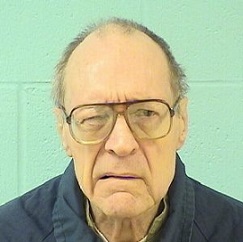
Robert Benjamin Rhoades, also known as The Truck Stop Killer, is an American serial killer and rapist. He is confirmed to have tortured and killed at least two couples in Illinois and Texas in 1989 and 1990, and is additionally suspected of torturing, raping, and killing more than fifty women between 1975 and 1990, based on data about his truck routes and women who went missing during those years and who met the profile of his preferred victims. At the time he was caught, Rhoades claimed to have engaged in these activities for fifteen years.
On February 22, 2017, Adam Purinton shot two Indian men, Srinivas Kuchibhotla and Alok Madasani, whom he had allegedly mistaken for Iranians, at a restaurant in Olathe, Kansas, killing Kuchibhotla. He reportedly yelled "get out of my country" and "terrorist" before firing. A third man, Ian Grillot, was wounded after he came to the two men's aid. Several hours later, Purinton was arrested in Clinton, Missouri.
Ray Shawn Jackson, known as The Gillham Park Strangler, is an American serial killer who strangled to death six women in Kansas City, Missouri from 1989 to 1990, dumping the victims' bodies in the area surrounding Gilliam Park.
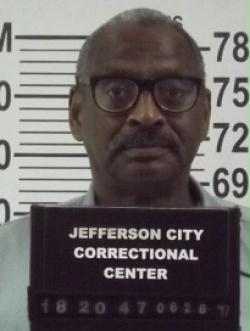
Marvin Lee Irvin is an American serial killer and former police officer who murdered two women in St. Joseph, Missouri in September and October 1990, and after his arrest confessed to an additional 1979 murder, which up to that point he had been the prime suspect in for years. For all three crimes, he pleaded guilty and was sentenced to life imprisonment without parole.

Daniel Oliver Jones is an American serial killer who raped and stabbed four young women to death in Kansas City, Missouri, between 1998 and 2001. He was arrested shortly after the final murder, and DNA evidence linked him to the previous crimes, after which he confessed and was given multiple life sentences.















